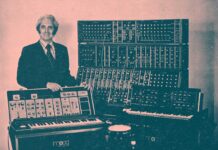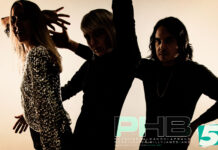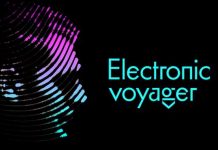Never in all of your reading, all of your listening, all of your Wikiholes and long benders on the YouTube algorithm will you come across a machine more mysterious than the Soviet-engineered ANS synthesizer.
Few have played it. Few can even understand how it works — how etching pictures on a sheet of glass takes the place of the knobs and piano keys of future synthesizers in creating these unearthly sounds emanating from the heart of a mainframe of steel and sensors.
Scarcity and the development of DAWs means few people who have created music with the sound palette of the TR-808 have actually touched or even seen one in real life. But the ANS sits all alone on its high, esoteric plateau. Only two have ever been created, and only one has existed at any given time since it was dreamed up by its inventor nearly a century ago. It took more than a decade for him to create the first one — and then despaired that the machine would ever be properly utilized by the right composer.
That musician was eventually found, however — and the ANS would be used to compose the score for three of the most acclaimed films in cinematic history. No actor or artist’s reputation ever suffered from a direct association with the films of Andrei Tarkovsky, and the role of the synthesizer in creating the “mass of sound” in some of the most hermetic films ever made added a whole new dimension to the mystique of the ANS machine too.
Light Music
Leon Theremin’s experiments in sound lead the musical inventor to becoming the Soviet Union’s top spy device maker, with a term in Butyrka prison and a stint in the mines in between. Yevgeny Alexandrovich Murzin on the other hand dreamed of synthesized sounds while making military radars and fighter intercept systems. During World War II and just after the war, the young lieutenant was deeply involved in planning and designing advanced military systems, which seems about as far from the world of music as you could get in the mid-20th century.
Murzin lacked a background at the conservatory (he had begun his studies instead at the Moscow Institute of Engineers), but managed to obtain some official support for his project. At the time there were only a few types of musical instruments that could truly be called “electronic”; the genre as a whole smacked of the avant-garde and riots among the monocled in Paris concert halls, its enthusiasts judged as somewhat suspect or shady individuals.
Murzin’s universal synthesizer was born in an aura of not art but mysticism. Murzin was a great admirer of the Russian composer Alexander Scriabin, famous for his exploration of synesthesia — in his case, sounds associated with colors and arranged in a circle of fifths by colors in the visible light spectrum. Murzin’s device would associate sound with light and shapes. It was an instrument that was also a robotic musician, one which would “play itself” referencing a physical drawing.
Picture a soundwave which is generated by music software from a passage of music. Now imagine drawing the soundwave first and having the software “read” and “play” it. That was the concept of the ANS — Murzin’s synthesizer named after his inspiration, Alexander Nikolayevich Scriabin.
Making this concept real on the other hand took Murzin more than a decade. “Reading” a soundwave took a tremendous amount of resources more than 50 years before software could read letters and numbers very well. Murzin’s synthesizer wouldn’t just have to read a limited number character shapes, but any sort of drawing the user wanted to make.
The ANS’s method of sound generation is astonishingly complex. Inside the ANS were five rotating glass discs with 144 tones printed (by hand) on each one. Light was projected through the discs and onto photovoltaic cellbank which converted the light into electricity and sent signals to the ANS’s amplifiers and bandpass filters.
The ANS could generate 720 tones this way — and unlike a human musician, it could play them all at the same time. The ANS “played itself” by reading a glass plate passed between the discs and the photovoltaic cells — the light would pass through the scratches on the plate, with the Y axis or vertical axis representing pitch and the X or horizontal axis representing time.
The user would “draw” their soundwaves on this glass plate which was coated with a non-drying mastic. The technique is similar to childrens’ “scratch drawings,” in which a thick paper is colored with rainbow paint and then covered with black paint which children scratch off to “draw.” On the ANS, the user would scratch through the mastic on the glass plate. Light would pass through the scratches. The non-drying aspect of the mastic meant that the composer could quickly smudge it to make corrections or changes without having to start with a fresh plate each time.

These scratch “drawings” were not limited to the dots and dashes of a computer punchcard, and required no specialized training. The ANS could be and often was ordered to play from glass plates with elaborate abstract or figurative drawings of stars, suns, landscapes or faces. Stanislav Kreichi, a member of Murzin’s lab, was most fond of covering the glass with “freehand drawing of graphic structures.”
It’s fascinating to compare how Murzin’s vision of synthesized sound forked so violently from the path of Western synthesis, which began with cabinets that looked like supercomputers and gradually evolved into decks roughly identifiable with organs and pianos. Photo-optic sound recording had previously existed in cinematography, but nobody had carried it to this level. Murzin’s machine was based upon “drawing” music with a stylus and creating sound from light; it would find its greatest role providing the non-music of a filmmaker who “sculpted in time.”
Meeting a Dream
“My discovery of electronic music was not accidental,” Eduard Artemyev would say. In 1960, the 22 year old graduate from the Moscow conservatory met Yevgeny Murzin. Many composers would use the ANS over the years, some like Alfred Schnittke and Edison Denisov would become or already were quite famous in their own right. But it was said that Artemyev was the one who most understood the possibilities and had sufficient imagination to compose music on a device that turned traditional composition on its head.
“A composer, working on the score of the synthesizer, is like a painter,” Artemyev would say of creating music with the ANS. “He paints, retouches, erases and deposits coded pictures.”
After he graduated, Artemyev was invited to work in Murzin’s lab. “The first thing I did when I started working on the ANS was recording my several compositions for piano on this grand apparatus,” Artemyev told Archie Patterson. “It was a real miracle when the graphics began playing sounds. My first piece composed especially for ANS and performed on this particular synthesizer was ‘Star Nocturne’ (1961).”

Solaris was the most famous but was not the first science fiction film that showcased the rumbling dark ambient drone of the ANS. It actually wasn’t even the first science fiction film Artemyev scored with the ANS. That would have been a strange film called Toward Meeting A Dream (sometimes called Encounter In Space), a 1963 Soviet movie directed by Mikhail Karzhukov and Otar Koberidze. The film is in almost every way a reverse, negative image of Solaris — optimistic, and showing Earth as a futuristic socialist utopia, answering the call of mysterious but friendly aliens stranded on the Martian moon of Phobos. The ANS was pressed into service to create the sound of a radio signal from another world, similar to the use of the theremin in early science fiction movies to orchestrate the wobbly descent of a UFO or the use of Bebe and Louis Barron’s home-wired transistors to dramatize the technology and imaginary monsters of Forbidden Planet.
Toward Meeting A Dream was exported to the West in a mutilated form (parts of it would allegedly show up cut into low-budget Roger Corman movies). The ANS’s star turn wouldn’t come until a chance meeting at a house party linked the vaguely inhuman machine to a film concerned in part with what it means to be human: Solaris.
A Mass Of Sound
Solaris is one of those films that people say changed their lives. It sort of did that for me too. Like many of Andrei Tarkovsky’s movies, it’s a film that’s easy to describe but difficult to explain. A cosmonaut visits a space station orbiting a planet with a vast, sentient ocean. The scientists studying the ocean have gotten nowhere — like the film they’re in, the characters can describe but not explain it — and now it’s begun to study them. It silently scans the human mind and replicates people from powerful or painful memories, which the alien ocean itself, likewise, can describe but not understand. In the case of the newly arrived cosmonaut, it replicates his late wife, who killed herself after he rejected her. It first terrifies him, as any ghost would. But he becomes increasingly protective, and then sees this disaster on a space station as a chance to correct the mistakes of his life.

Nothing Andrei Tarkovsky made could be described as “ordinary,” and Solaris was no typical ’70s space opera. Akira Kurosawa visited the set and after his first viewing told Tarkovsky he felt “real fear.” “It somehow provokes pure horror of the soul,” Kurosawa later wrote.
Stanislaw Lem, who wrote the novel Solaris, bristled at the departures from his work that he saw on the screen as “so much of the weirdness I cannot stand.” He famously told Tarkovsky he didn’t make a movie from his novel at all — he made Crime and Punishment In Space.
But it’s most often compared to Stanley Kubrick’s 2001: A Space Odyssey — a film which Tarkovsky himself found cold and sterile. Rather than dazzling the audience with a vision of the future, as Kubrick did, Tarkovsky wanted to make his space station look like “a broken-down old bus and not some futuristic space utopia.”
Tarkovsky first met Eduard Artemyev at a house party thrown by art director Mikhail Romadin (the man who would make that broken-down space bus). “It came up in conversation that I had composed electronic music,” Artemyev remembered. “At that time very few people had done that. It was a very novel thing.”
Tarkovsky was invited to Yevgeny Murzin’s lab. “He came around, looked around, didn’t say much and left.” Two months later, he invited Artemyev to write the music for Solaris.
“Straight away he said several things that took me by surprise. [Tarkovsky] said, ‘I don’t need music in my film. I need a person to orchestrate the sounds of nature. I need a composer’s ear and a composer’s hand to organize the sounds surrounding us according to the laws of music.'”
Today we would call this, or something like this, “sound design.” But at the time there was not much like it. Tarkovsky’s movie about an alien world would be saturated in the imagery of earth — and his apparent interest in electronic music would involve mixing traditional orchestral instruments over it.
At some point Artemyev warned that without any music at all, with just background noise, the film would be “dead.” He began introducing instruments to mimic or dramatize for forces of the earth — things like “voices, a tapping of the strings lightly as the rustle of grass. [Tarkovsky] liked this idea very much. And that’s how we very slowly created a special musical language: the surrounding world, with the help of the orchestra. The clusters of soft sounds emerge almost inaudible, sometimes overlapping. The viewer may not even notice them. It’s all in the context.”

Tarkovsky wanted “a mass of sound, coming from nowhere and disappearing into nowhere.” Artemyev layered the electronic sounds of the ANS and the organic sounds of the orchestra, bringing together “different electronic recordings, superimposing orchestras and chorus and then mixing it all together. It didn’t come together all at once. It took many recording sessions.”
As a result of this, most electronic music nerds who watch (or rather listen to) Solaris hoping for exposure to the sound palette of the ANS often aren’t sure they’re actually hearing it. Having watched the film recently in a public theater, the electronic aspects of the soundtrack were almost imperceptible with the exception of a Tokyo driving scene and the harrowing roar of Solaris’ planet-wide ocean. The actual soundtrack steps back in the way Brian Eno would describe “ambient music” several years later. It was hard to remember the soundtrack at all other than the set classical pieces.
But later, watching a restored version with headphones on, it was hard for me to explain how I’d missed it. The tones of the ANS/orchestral mix seem to form a foundation for so many scenes, like invisible pylons guiding the film’s direction. Now it feels impossible to remember certain scenes without also evoking the blast of the ANS — for instance, the cosmonaut’s wife’s first appearance, her face blank, like the alien intelligence of the ocean itself, with the synthesizer chewing the scenery. In many scenes like this, the ANS is the scenery.
Through his strange working relationship with Tarkovsky, Artemyev managed to create a sound that was something akin to the gloomy drone of modern dark ambient music (which itself often samples stringed instruments), and a unique way of utilizing electronic music, which was still not taken very seriously in the film world. It persisted through three of Tarkovsky’s films — Solaris, The Mirror and Tarkovsky’s masterpiece, Stalker.
“A musical language was born that was only used by Andrei Tarkovsky,” Artemyev said. “It was used in these three films and never used again.”
Burnt Offerings
Artemyev too moved on; he wrote a vast number of scores for Soviet and then for Russian movies, most of them rather “traditional” orchestrations. The ANS’s evolutionary line all but died out with the original machine built by Yevgeny Murzin. Daphne Oram had been constructing a machine that also used drawn soundwaves to generate sounds around the time Murzin was finishing the ANS, only she used 35mm film strips as the medium. Most of the other machines that used light to generate sound were built by Soviet inventors and musicians. Photoelectric synthesis was a specific solution to the general problem of creating artificial sounds using electronics, drawn soundwaves a specific method of input. Bob Moog’s innovations with keyboards and patch cords ultimately won out.
Several electronic music compositions created on the ANS were collected on an album called Musical Offering. Among the last vinyl records released by the official Soviet record label Melodiya in 1991, Musical Offering seems to have been largely ignored in the chaos of the USSR’s disintegration. Eight years later, these tracks and several others were included on Electroacoustic Music Volume IV: Archive Tapes Synthesizer ANS 1964-1971 released on CD by Russian label Electroshock Records.
The original ANS was destroyed, though a “replica” was constructed and is currently exhibited at the Glinka Museum of Musical Culture in Moscow, which was used by Coil for their ANS album. There are several videos on YouTube of formal demonstrations of the ANS, though it seems Coil may have been among the last to make notable music on it.
Like everything else, though, the ANS was digitized. The “virtual ANS” app was developed and is still being updated, and has been ported to Windows, MacOS, Linux, iOS and Android. It’s hard to get anything like the holy voice of God present in the Tarkovsky films from it, though “drawing with sound” is an interesting exercise in generating random sounds and then refining them.























[…] TO READ FULL STORY Clik Here! […]
[…] A great read: The story of the Soviet ANS synthesizer. […]
[…] post Space Oddity: the weird history of the Soviet ANS synthesizer appeared first on 5 […]